An audio editing tool is essential for musicians and anyone working with audio content. Having the right editing tool can make all the difference in your work.
This article has compiled a list of the best choices for every budget. I have options from free to professional-level software. Besides, I will look at their features, pricing, and user-friendliness.
The music tool can turn your inspirations into impressive tunes. You can adjust the beat and add creative effects with its features. Thus, try out each of the music production tools below, then choose your favorite one!
So, let’s discover!
1. Pro Tools
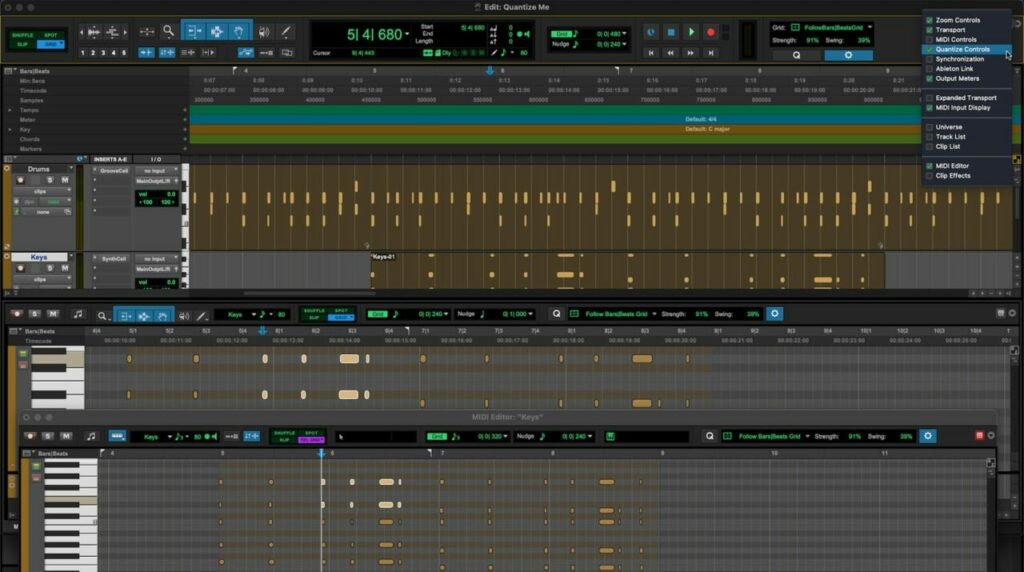
Specifications
| Hard disk | 15GB available |
|---|---|
| RAM | 8 GB |
| Operating System | Windows, macOS |
Key Features
As a user who has worked with Ableton for audio editing in previous jobs, I hesitated to switch to Pro Tools when starting my new tasks.
Yet, I was impressed with the layout’s simplicity when I opened it. It has made audio editing a more manageable job.
Besides, it even provides official documents that teach me how to transfer files from one artist to another. So it is not surprising that the best musicians and sound producers love it.
Besides, the editing functions in Pro Tools are simple and powerful. Also, the routing and built-in options for audio are excellent. Thus, it became a reference in the professional audio world.
Price: $29.99/month
Pros
- Industry-standard tool for music
- Simple-to-use editing functions
- Excellent routing and built-in options for audio
- Easy to find support from the community
- Offers official documents and guides for transferring files between artists
Cons
- High price
2. Logic Pro X
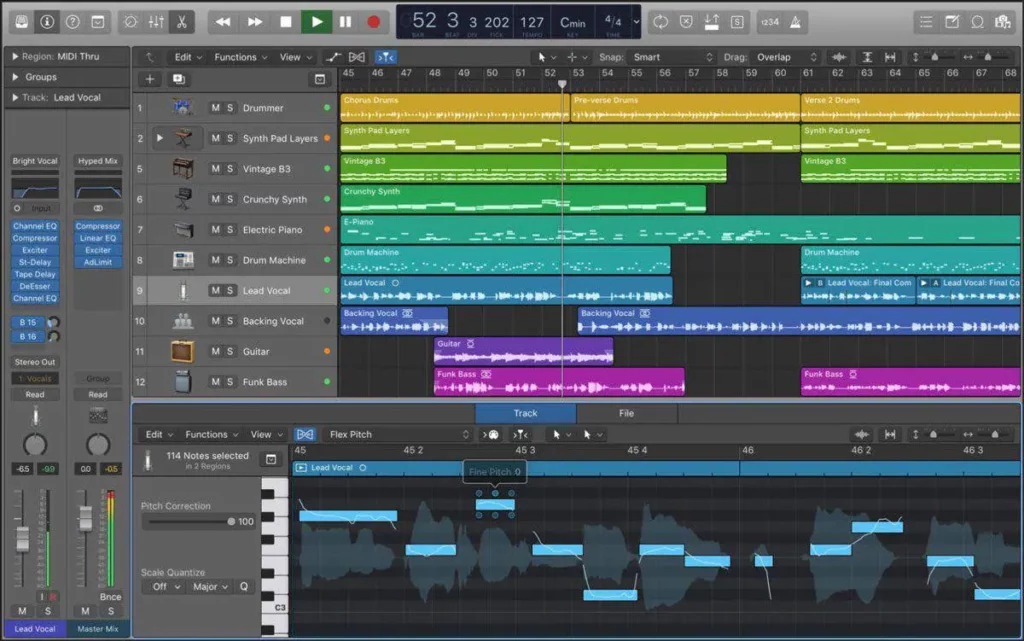
Specifications
| Hard disk | 6GB available |
|---|---|
| RAM | 4 GB |
| Operating System | macOS |
Key Features
Firstly, the platform offers many options to make your music sound great. Also, I especially like that it can integrate with Ominispear and import various music libraries.
Interestingly, DAW is popular in the Indian film industry, including the Bollywood and Jingle industries. Plus, the default templates that come with it are rich and easy to use.
Also, it has loads of sounds, tracks, and options available to any user. Hence, customization is easy, and I can personalize anything I want with a button’s click.
Besides, you can easily play music if you have experience. But if not, you can use the instrument keyboard to get the same sound.
Price: $199.99
Pros
- Easy to use
- Highly customizable
- Support many music projects
- Offer a wide selection of pre-loaded virtual tools and plugins
- Integration with Ominispear and the ability to import music libraries
Cons
- MacOS exclusive
3. Ableton Live
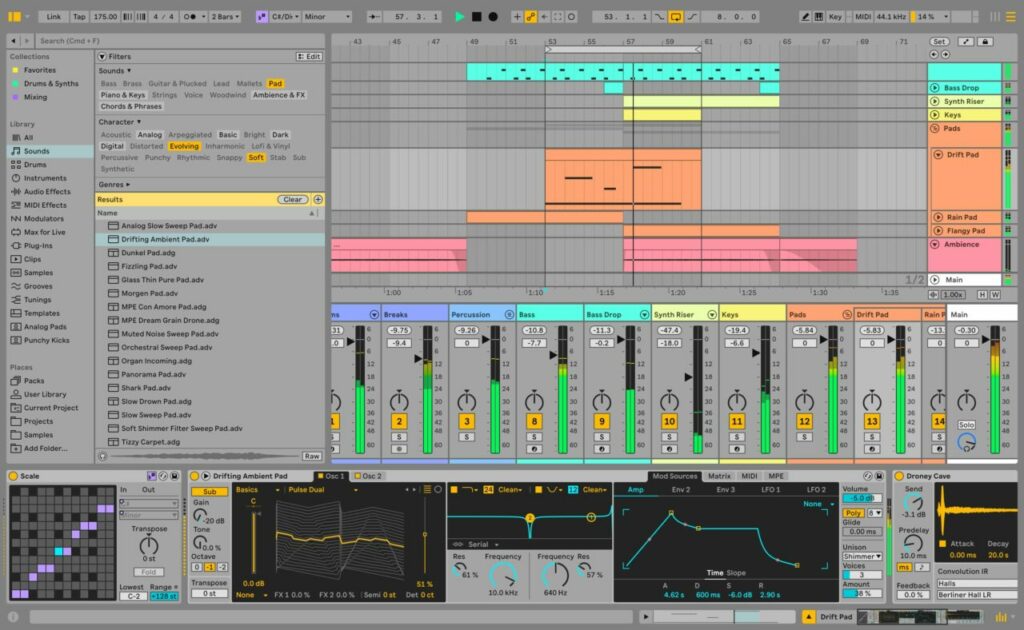
Specifications
| Hard disk | 3 GB available |
|---|---|
| RAM | 8 GB |
| Operating System | Windows, macOS |
Key Features
Honestly, this tool is the perfect combination of powerful and fun. One thing that makes it stand out is its ability to be used in live performances and the studio. Also, the UI is very descriptive and easy to navigate or use all its features.
Besides, the drag-and-drop functionality helps me make music easily. Also, the tools available that come with it are impressive. Accordingly, the new morphing and reverb features are next level.
I like the performance view that sets things up based on loops and the ability to sync with instruments to create electronic music.
In short, it is the best live performance and music production DAW for anyone looking to make, mix, or master music.
Price: From $99.00
Pros
- Versatile
- Unique and intuitive interface
- Easy to move tracks and channels
- Have a library of built-in sounds and samples
- Well-suited for electronic music production
Cons
- Have fewer MIDI editors than others
4. FL Studio
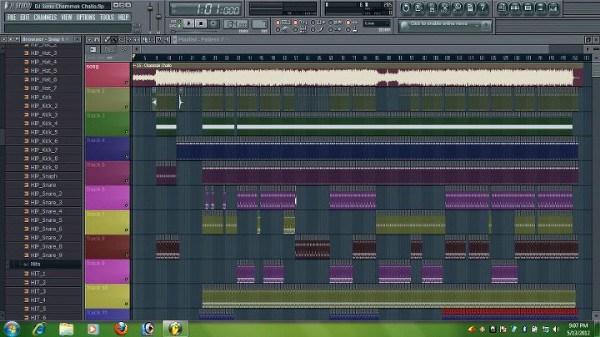
Specifications
| Hard disk | 4 GB available |
|---|---|
| RAM | 4 GB |
| Operating System | Windows |
Key Features
First, FL Studio has a colorful and vibrant UI. Also, it has multiple assignable tracks and playlists. So I can easily access the workspace.
Besides, I like separate spaces for mixing tracks, MIDI Mapping, and layering. Also, the default ASIO mode is a lifesaver for connecting external MIDI devices and creating music without an Audio Interface.
What I love most about this tool is the ability to create beats. Accordingly, the tools inside are true gems that allow me to make music and mix/master tracks. Honestly, the editing workflow could be better but still manageable.
Also, the sound quality is impressive, and FL Studio has many standard tools. The richness of musical VSTs, covering a wide range of Indian and Western instruments, makes it the best tool for composing EDM, hip-hop, and contemporary songs.
Price: From $99.00
Pros
- User-friendly interface
- Rich music VST collection
- Great beat creation
- Built-in audio visualizer
- Lifetime free updates
Cons
- Faulty and prone to crashes
5. Garageband
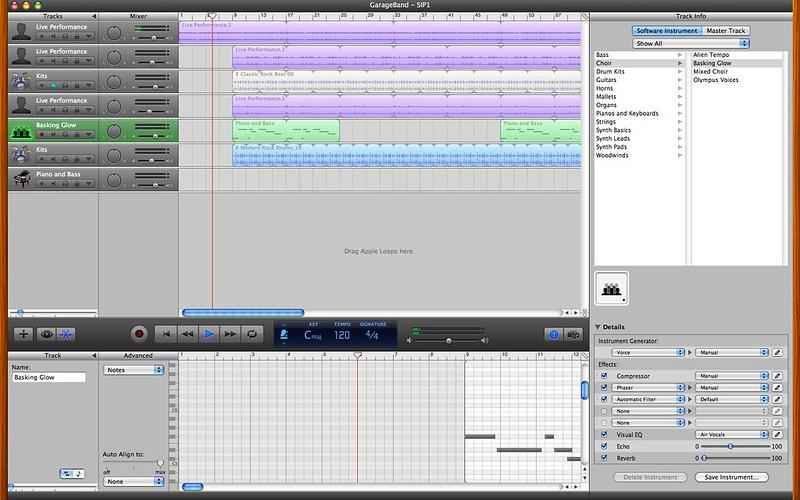
Specifications
| Hard disk | 2 GB |
|---|---|
| RAM | 256 MB |
| Operating System | macOS |
Key Features
My first impression is that GarageBand is simple to set up and use right out of the box. Accordingly, its control layout is intuitive enough for beginners.
I love how easy it is to create a beat due to the wide range of drum kits and machines available.
I’m not tech-savvy, but I found it easy to get my audio in and start cutting for editing. Even simple operations like fading the active audio are simpler in this tool than in any other software I’ve used.
Besides, it has some high-quality amps and pedals. It’s a great feature if you want to plug your guitar in.
Also, it can be used for a task as easy or complex as I want. It depends on how willing you are to learn about recording technology. Besides, I love to record voiceovers, make music, and more.
Price: Free
Pros
- Easily accessible dips
- Intuitive and user-friendly interface
- Provide many virtual instruments and loops
- Includes many sound effects
Cons
- Limited for experts
6. REAPER
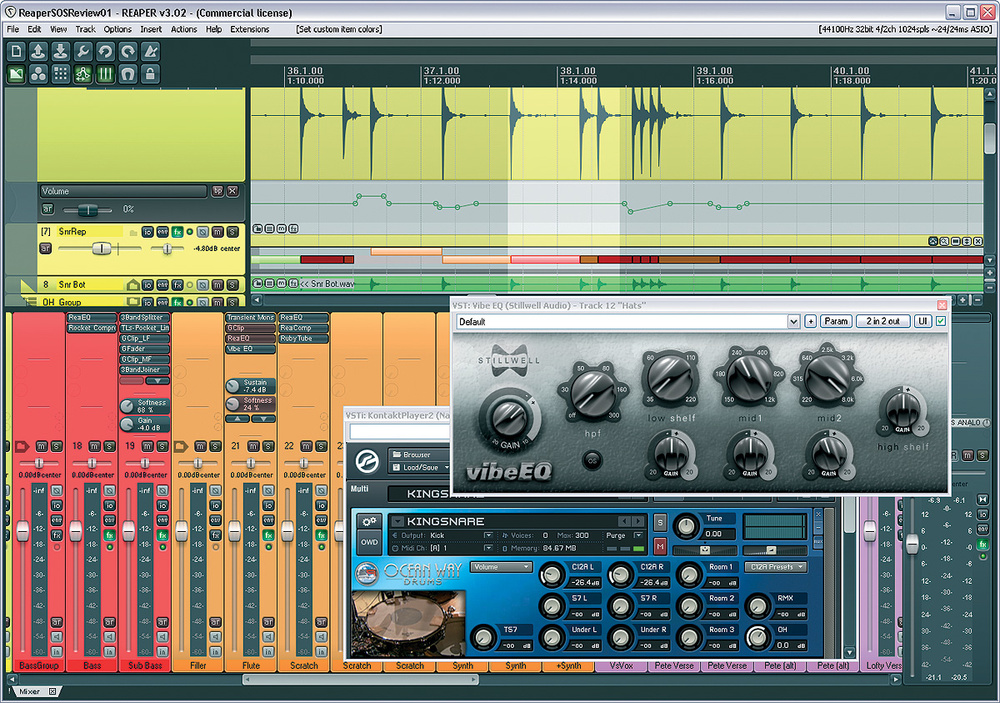
Specifications
| Hard disk | 25 MB available |
|---|---|
| RAM | 16 GB |
| Operating System | Windows, macOS |
Key Features
One of my favorite things about this one is its powerful routing capabilities. Accordingly, it makes routing audio and MIDI any way I want easy.
Besides, I like the fact that it supports multiple passes. This feature is helpful during my recording. This tool has a library of effects. So I can get creative with my sound.
One con to REAPER is that it can be a bit overwhelming. You will find it challenging to use if you are a beginner.
Price: From $60.00
Pros
- High customizability
- Flexible
- High performance
- Regular updates and bug fixes
- Low price
Cons
- Overwhelming for beginners
7. Cubase
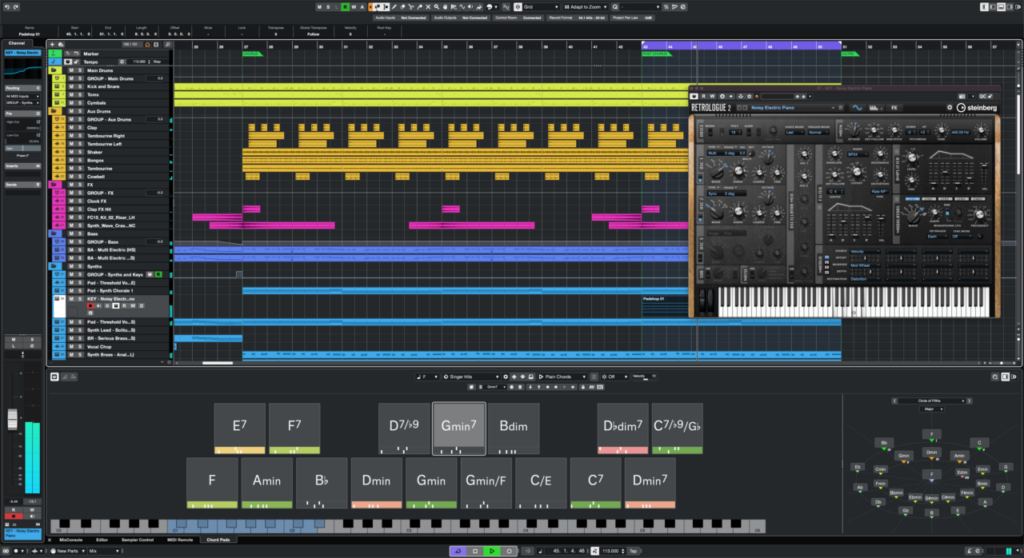
Specifications
| Hard disk | 50 GB available |
|---|---|
| RAM | 8 GB |
| Operating System | Windows, macOS |
Key Features
Cubase is a DAW for music production, recording, and live performance. I like how efficient VST is when working with them.
Firstly, the UI is user-friendly once you get the hang of it. It is a good choice for both beginners and experienced music producers at this price.
Secondly, I appreciate Cubase’s compatibility with many controllers and music hardware. Thus, it helps to optimize the team’s resources.
Thirdly, this software has an extensive sound library and built-in VST and sound effects. They are enough for any manufacturer with average knowledge.
In addition, the MIDI sequence was enhanced. Hence, the workflow becomes flawless. Also, the amount of third-party effects that can be included through VST plugins is impressive.
Finally, it has Stems export options. It is a game changer, along with other functions such as:
- MIDI
- Chord track
- Logical editor
- Track display options
- Mixer view
- Customizable MIDI lane on the piano roll
- Freeze instrument option
Price: From $110.46
Pros
- Powerful
- Great compatibility
- Intuitive and user-friendly UI
- Stems export options and accurate LUFS metering
- Come with a built-in sound library and a variety of third-party effects
Cons
- High price
8. Studio One
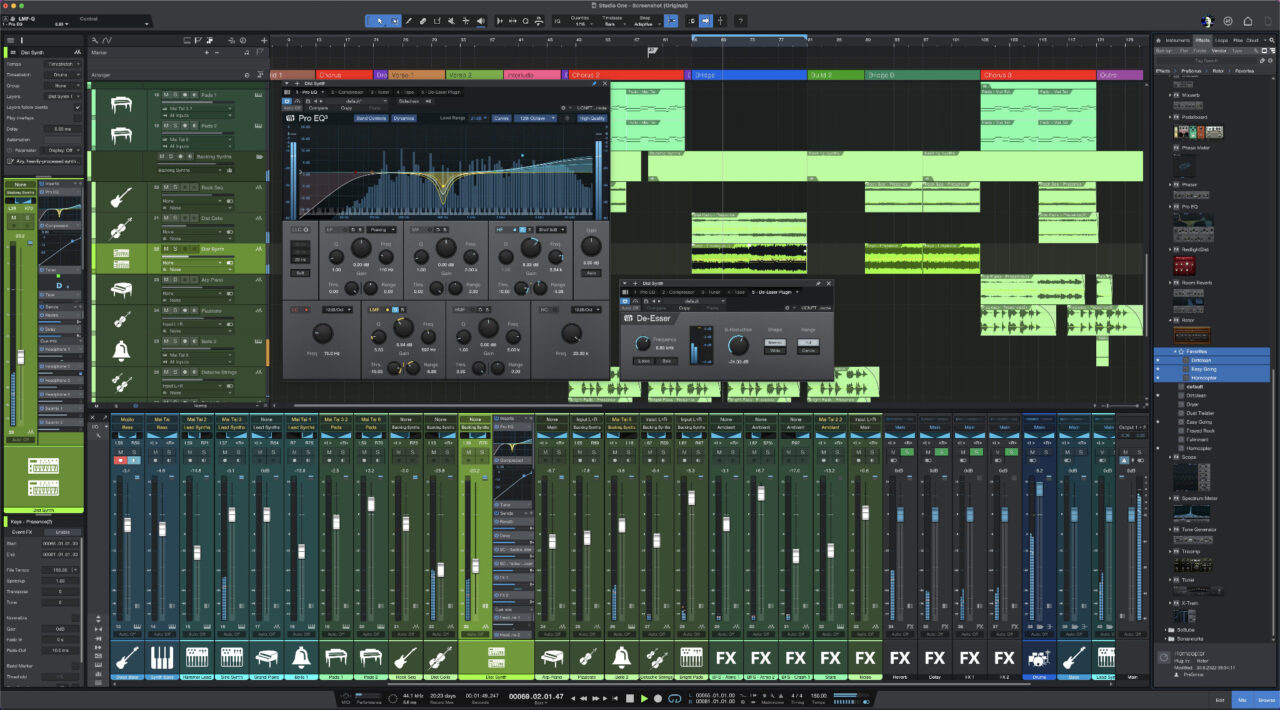
Specifications
| Hard disk | 2.5 GB available |
|---|---|
| RAM | 4 GB |
| Operating System | Windows, macOS |
Key Features
As an older citizen, Studio One has allowed me to continue creating and performing music in my retirement.
Like most tools on this list, Studio One’s interface is intuitive and easy to use. The hotkeys and tools are well-planned, and the updates are regular. This meticulousness shows that Presonus cares about the user experience.
The main advantage of this tool is that it comes with everything I need to produce a professional track. The virtual instruments and effects are top-notch. So I can create great music without any external software.
Yet, for those who want more options, there are plenty of online resources to expand the software’s capabilities.
Besides, the integration with Presonus hardware is seamless. Thus, it becomes an all-inclusive platform for live or studio recording.
Also, the Presonus Sphere subscription services are a game changer. They provide access to a wide range of helpful resources and plugins.
Price: From $52.95
Pros
- Regular updates
- Intuitive and user-friendly interface
- Come with a wide range of virtual instruments and effects
- Suitable for recording, writing, producing, mixing, and mastering
- Good integration with PreSonus hardware and other third-party plugins
Cons
- Limited third-party plugin support compared to others
9. Acid Music Studio
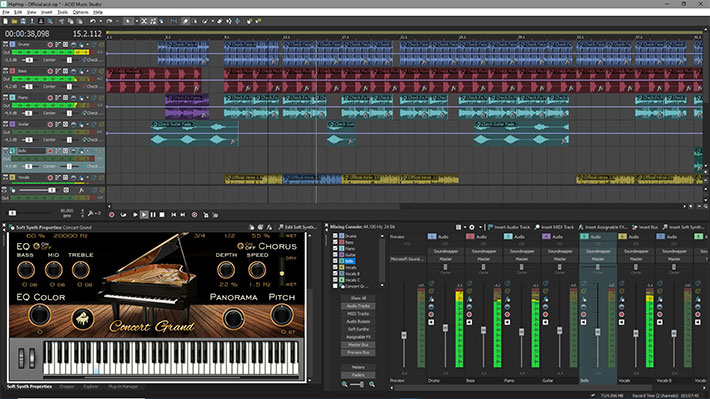
Specifications
| Hard disk | 400 MB available |
|---|---|
| RAM | 1 GB |
| Operating System | Windows |
Key Features
I strongly recommend Acid Music Studio to anyone who wants to get into music production without breaking the bank. The user-friendliness of this DAW is top-notch. Also, the program’s built-in tutorials make learning easier.
Within an hour of unboxing, I was making great music. It does not require much effort to connect the drive. Besides that, VST is a huge relief compared to other programs I’ve tried.
Functionally, Acid Music Studio does everything other DAWs can. But it is worth mentioning that I spent a lot less money. As a dedicated amateur, I don’t need a lot of bells and whistles, and this program delivers.
I can create music and beats quickly using loops available on the internet and in the program. Besides, I can slow down or speed up my track, change keys, and drag and drop loops.
I have released some of my creations on CD, and I credit this program for sparking my creativity. It’s a great addition to anyone’s music production arsenal. It is helpful for those with no formal musical training.
Price: $66.37
Pros
- Clearly labeled functions
- Low price
- Quick and easy to learn
- Includes a variety of loops and samples
- A powerful tool for developing drum tracks and creating beats
Cons
- Limited editing tools compared to more professional-level programs
10. Cakewalk
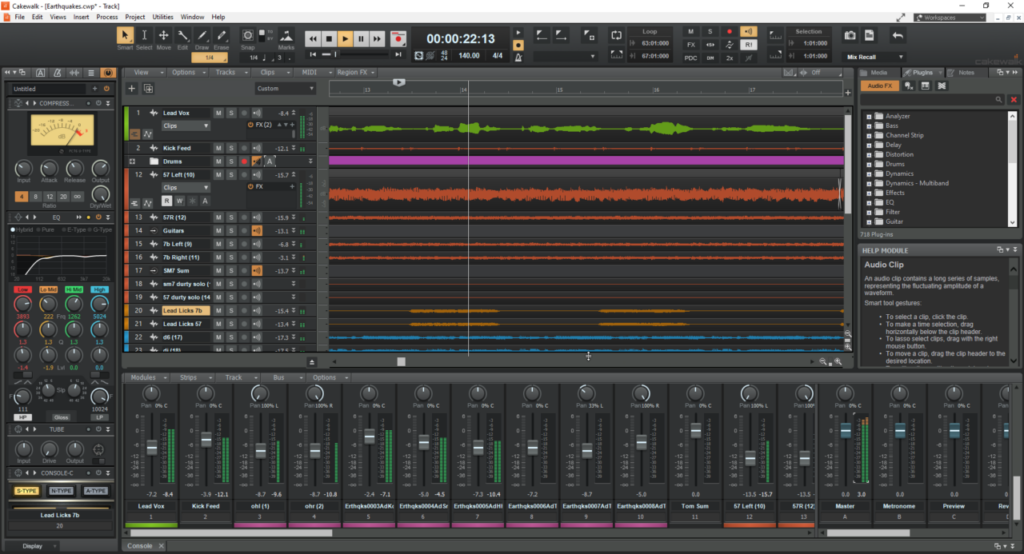
Specifications
| Hard disk | 3 GB |
|---|---|
| RAM | 8 GB |
| Operating System | Windows |
Key Features
The biggest positive of using Cakewalk is that it’s completely free. So I don’t have to invest hundreds of dollars to get a license. Also, the interface is top-notch, and the included effects and plugins are excellent.
Besides, I appreciate that Cakewalk supports third-party VST installations. Also, it offers a wide range of drafting methods, including:
- Staff View
- Piano Roll
- Pattern View
- Event List
- Matrix View
In addition, I noticed that Cakewalk’s workflow is similar to that of ProTools and Cubase. So anyone familiar with those DAWs will feel at home on Cakewalk. Also, the keyboard shortcuts throughout the software make editing a breeze.
Moreover, the layout is consistent with its online platform is also a plus. Besides, the addition of sound profiles enhances the quality of recorded tracks.
I also love the ability to stack tracks and record audio while listening to others. Hence, my songwriting and recording process became more streamlined.
Price: Free
Pros
- Free
- Easy for beginners
- Many built-in effects and plugins
- Support the installation of third-party VSTs
- Offers a variety of composing methods
Cons
- No official technical support is available
How To Choose?
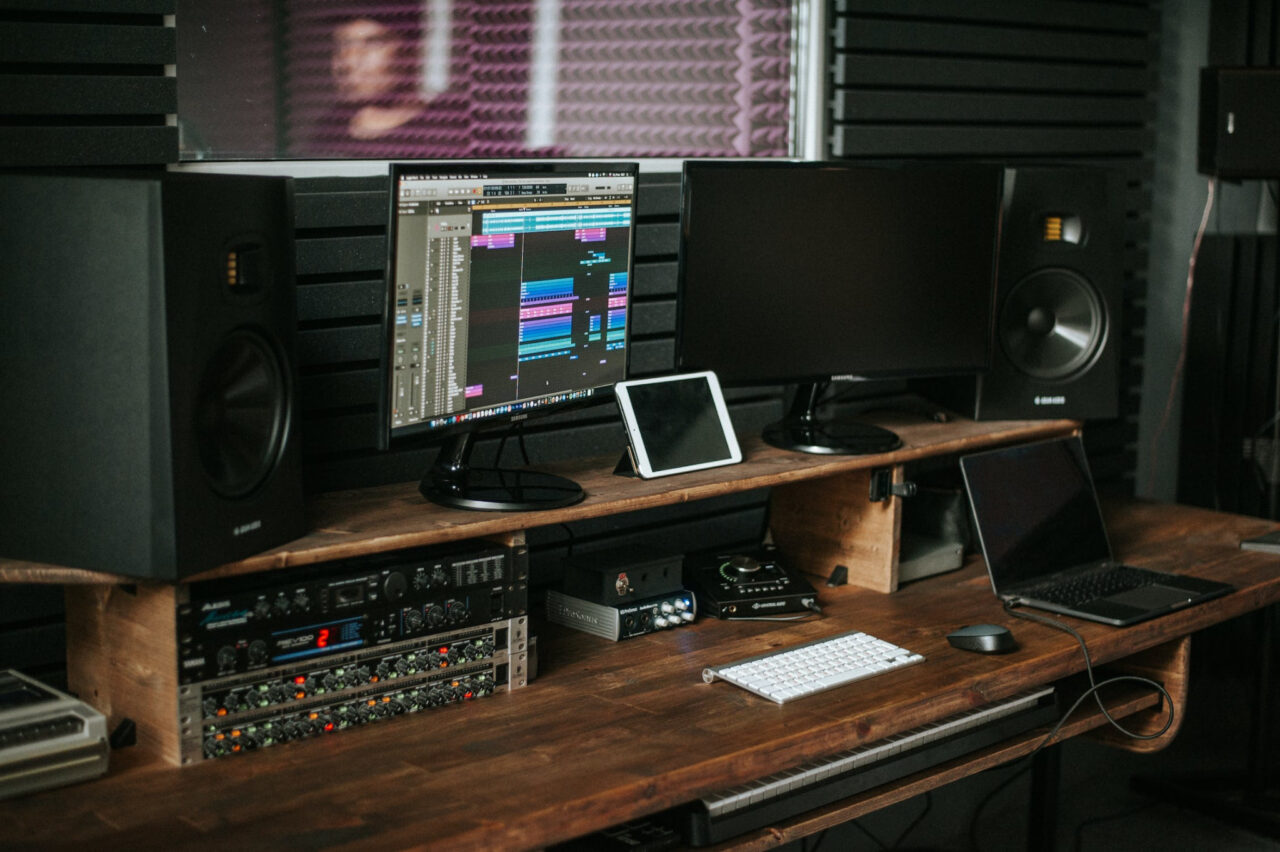
I have three notes for you in choosing the best tool:
Features
The essential features of music production software include:
- Number of tracks that can be recorded simultaneously
- Recording ability
- Audio editing
- MIDI
- Quality of built-in effects and instruments
Thus, choose tools that offer the least of these benefits.
User Interface
The UI of the music production tool should be intuitive and easy to use. Hence, you can speed up your workflow and make music production more efficient.
Conversely, a cluttered and confusing Ui can make it difficult to find essential features. Hence, it leads to frustration as well as wasted time.
I recommend choosing a user interface that suits your taste and workflow style. Currently, some software offers customization options for the UI. They allow you to organize and configure the workspace to your liking.
Cost
Remember that premium software can come with a high price tag. Thus, assess whether the investment is worth your needs. Also, consider any additional costs such as:
- Upgrade
- Add-ons
- Plugins
While freeware may seem attractive, it’s essential to consider the limitations and potential lack of support that can come with it.
FAQs
Which Software Is Best For Music Editing?
Pro Tools is widely considered the best software for music editing, especially in professional settings. Its powerful features and tools make it an industry standard for music and audio production.
What Is The Easiest Software To Make Music?
It is Garageband. This free digital audio workstation (DAW) comes pre-installed on Apple devices. Also, it offers a user-friendly interface and various virtual instruments.
Is It Hard To Create Music?
Yes. It can be challenging if you don’t have any prior experience or knowledge. Yet, anyone can learn how to make music with dedication and practice.
What Do You Need To Make Music?
To make music, you will need a few essential tools:
- A computer
- A digital audio workstation (DAW)
- An audio interface
- Headphones or studio monitors
- A MIDI keyboard or controller
Also, you will need to have a basic understanding of music theory and production techniques.
What DAW Is Best For Beginners?
Acid Music Studio stands out as a user-friendly and affordable choice. Its intuitive interface and included features make it easy for beginners to learn and create music.
Final Thoughts
The world of music production software offers many options for users of all levels and budgets. Each of the 10 music production software programs above has strengths and weaknesses. So they are suitable for each specific user audience.
I highly regard Pro Tools and Logic Pro X as the popular choices for professional audio editing and music production. Consider these two options!
With the right music production software, you can unleash your creativity and create high-quality audio content that stands out!
Feel free to share your opinions!
